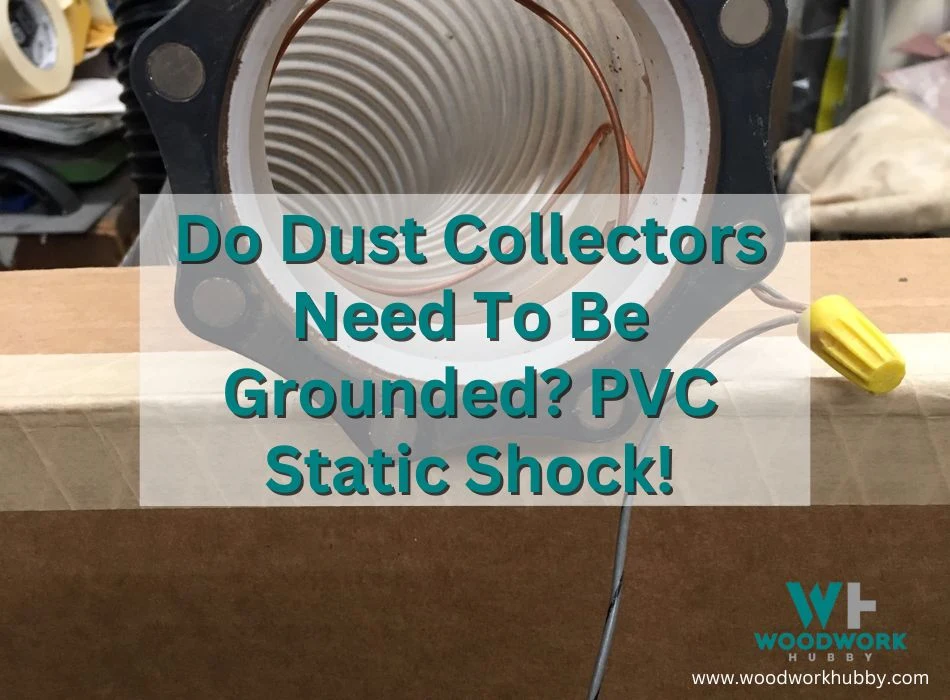I upgraded my dust collector system recently, and nothing gave me a tougher time than grounding it. There was a time when I used to believe that grounding was for high-capacity industrial dust collectors only.
But because of the dust collector fire horror stories on woodworking forums, I have been very cautious about grounding. And here’s why I find it worth my time to put in over an hour just to properly ground my dust collector.
Dust collectors need to be grounded, with every part of the duct having quick access to the grounding circuit so that static buildup can be minimized. A buildup of static charge might not cause an explosion but it can produce a static shock if not grounded.
In this article, I will cover the likelihood of that as well as the extent to which grounding is required in PVC and steel ducts respectively. By the end of this post, you’ll know how important it is to ground your dust collector and how to ground it. But first, let’s take a deeper dive into the main question.
Do I Need To Ground My Dust Collector?
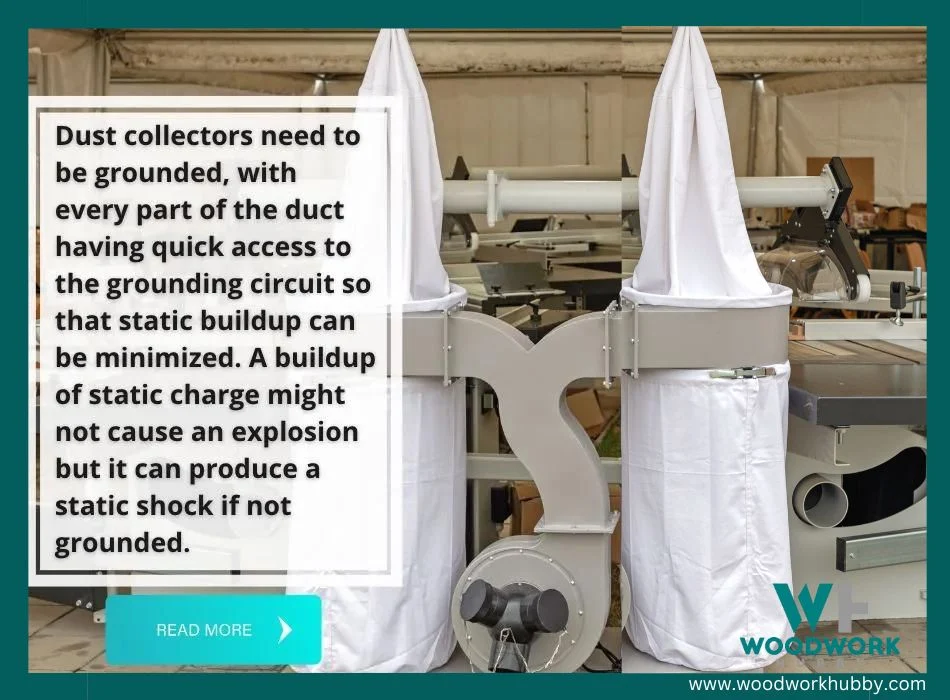
You need to ground your dust collector regardless of its build, size, and make. All dust collectors can have a static electricity buildup which is a fire hazard. Grounding your dust collector ensures that the charge is released safely.
Dust collector systems can build up a static charge, which needs a path of transfer. A copper wire can be used to guide the charge safely to the earth. In its absence, any person who touches the material can get zapped. Depending on the buildup, this can be dangerous.
A dust explosion within a hobbyist shop is very unlikely. I still recommend using some grounding methods.
Most often, it isn’t physical contact but the excess charge which can cause serious damage. In minor cases, the charge can produce sparks that ruin internal wiring and burn the components of the dust collector. In extreme cases, the charge can start a fire which can lead to significant loss of life and property.
Surprisingly, many tragic failures of safety protocols happen in intermediate shops where most components are grounded. People are often misinformed about the need for grounding especially when it comes to PVC pipes. Since PVC ducting seems plasticine, workshop owners might assume it cannot carry any charge.
One option when you are setting up your dust collector is to vent it outside. See my article explaining if you can vent a dust collector outside.
Video showing a way to ground your dust collection
Does PVC Ducting Need To Be Grounded?
PVC ducting needs to be grounded because the high velocity of air that moves through the system can cause friction, which produces static electricity. To avoid a charge-buildup and subsequent sparks and accidents, you should use a copper wire to ground the ducts.
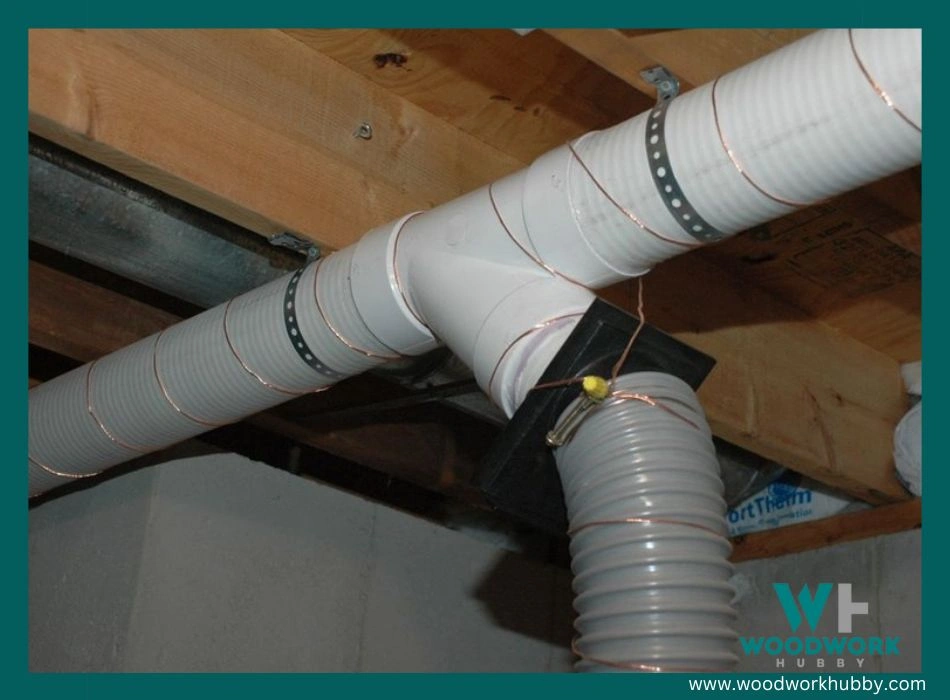
The material you use to ground PVC ducts doesn’t have to be copper but must be a better conductor than PVC. Otherwise, you would just extend the charge buildup. Moreover, you must note that PVC ducting’s grounding requirements are proportional to the velocity of the air and the width of the duct.
The wider a PVC duct, the less friction there is when air moves through it. Many dust collectors with low CFM can retain functionality without being continuously grounded. But it is stiff safer to properly ground them anyway.
Metal ducts are considered better in terms of static charge handling, yet they aren’t exempt from grounding requirements either.
Does Steel Ducting Need To Be Grounded?
Some steel ducting needs to be grounded with a wire so that it doesn’t build up a static charge due to friction with dust particles and air as well as from the actual electric function of the dust collector.
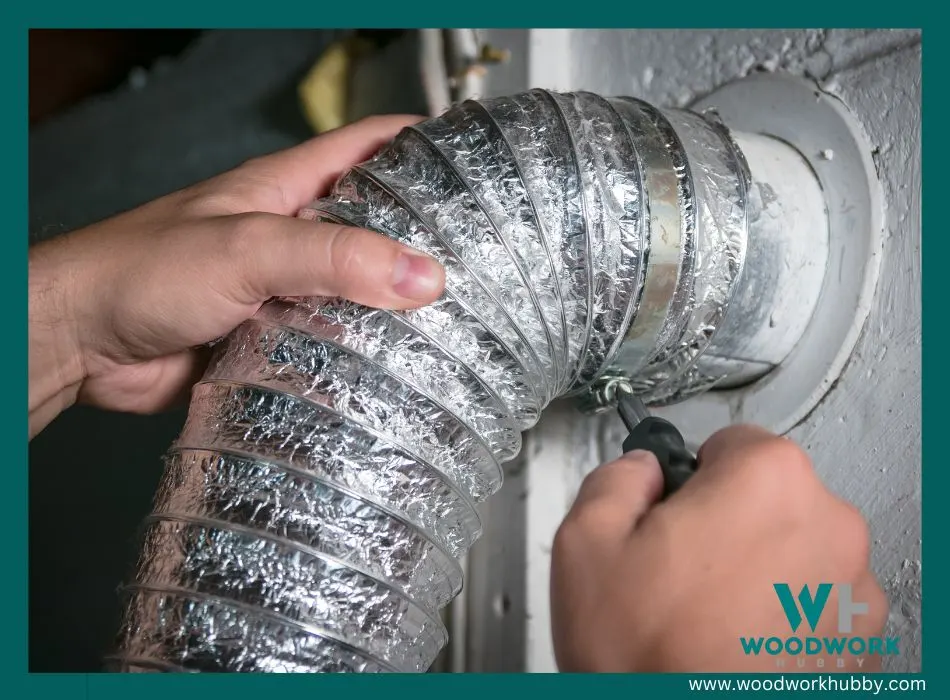
Metal ducts are better at minimizing static discharge. Some of them aren’t good enough to offset the need for proper grounding. Ultimately the need for grounding depends on how much the duct vibrates when the dust collector is operating.
If the duct is narrow and the airflow rate is high, then adding a grounding wire is strongly recommended. If the airflow rate isn’t too high or the duct is sufficiently wide, the static charge doesn’t build up at a high enough rate to pose any serious threat.
The problem is that there are no tangible metrics behind which any authority would stand. You will not find any guidelines guaranteeing that a 14-inch (355.6 mm) duct with a specific CFM will not build up a static charge. Everyone, including me, wants to err on the side of caution. Better grounded than sorry.
The difference between a metal duct and a PVC duct is that you can ground a metal duct from any specific end, while a PVC duct needs to have a grounding wire running across its length. The grounding wire should be able to pick up the charge from any point in the duct.
With PVC, the charge is picked up quickly when the wire is at every point of the pipe. With a steel duct, the duct itself transfers the charge quite quickly to the nearest path to the ground. In both cases, having a path from the duct material to the ground is non-negotiable.
Basement shops in someone’s home typically won’t use metal ducting due to their size. See my article on the best dust collectors for basement shops.
How Do I Stop Static In My Dust Collection?
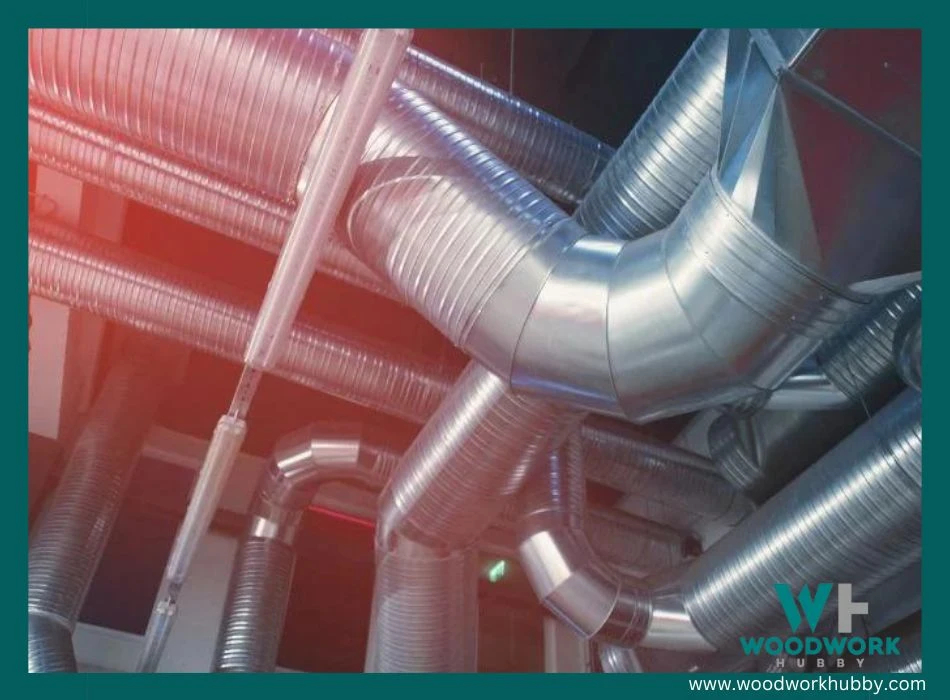
You can do one of two things to stop static in any system. You can reduce the friction in the system or you can ground the duct. Since reducing friction entails lowering the airflow and hence minimizing dust collection and efficiency, grounding your dust collector is the best way to stop static.
Grounding your dust collector requires running a wire along the length of a non-conducting material like PVC or at one end of a conducting material like a metal duct and then having the wire reach the ground to discharge any static buildup.
Is Your Dust Collection System An Explosion Hazard?
Your dust collection system is an explosion hazard if it is congested, not grounded, and collecting combustible dust. The presence of combustible dust is often critical to a dust collector explosion. Otherwise, ungrounded ducts and faulty wiring can cause a fire but may not lead to an explosion.
In order to be sure that your dust collector is not an explosion hazard, you need to check the following:
- Avoid congested dust collector setup – The more congested the collection system, the higher the internal friction.
- Make sure the electronics aren’t overheated – If the electronics get heated because of poor ventilation or overworking, a fire may start.
- Appropriately ground the ducts – Static buildup can produce sparks when coming in contact with certain particles. Wood dust doesn’t ignite from static buildup.
- Ensure that the collected dust isn’t combustible – Combustible dust can catch fire upon rubbing with ducts that aren’t properly grounded.
Can Static Electricity Ignite Sawdust?
Static electricity can theoretically ignite sawdust and cause a fire which might lead to a prolonged fire in your workshop. I have never heard a first-hand or second-hand account of this in 20+ years of woodworking.
My own shop had a system that wasn’t grounded for a few weeks, and there were no explosions or fires. Grounding dust collectors that are dedicated to removing sawdust is, still, crucial.
A duct with excess static electricity can act as an electric lighter to sawdust, which is just wood. Wood can catch fire from electric shock, but static friction isn’t as potent as an electric lighter.
Wood isn’t the preferred path of transfer of charge. If any material that is better at conducting charge is connected to the duct and the ground, the excess charge can escape the duct without interacting with sawdust. You will get a static shock more often than your workshop dust will get ignited.
Be sure to give your dust bags a wash once in a while to help prevent excessive dust build-up.
A video showing information that woodworking dust doesn’t necessarily cause explosions and how to stop that static.
How Do You Ground A Dust Collector?
To ground a dust collector, you must run a wire on the inside of the pipe or tape it on the outside, ensuring that the entirety of the duct is covered. Then the wire must be connected to structures that connect with the ground.
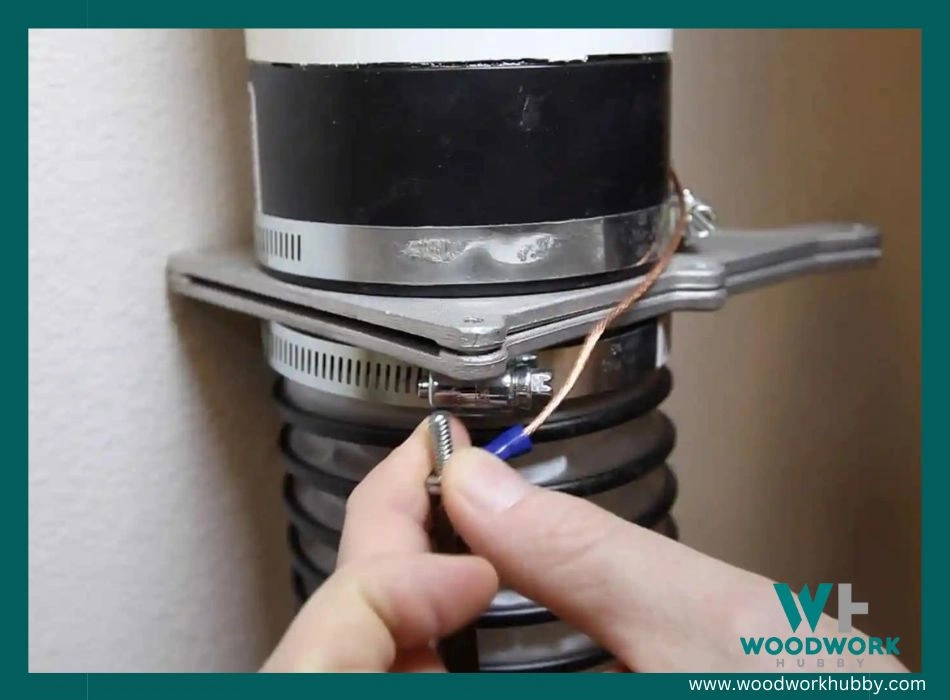
If you cannot find any such structure, you can directly connect the ground wire to the ground. As long as there is an unbroken path from the collector to the ground, there is no static buildup threat.
If you want to know How Many Watts Does Your Dust Collector Use?, just click on the link to learn more.
My Recommended Products For Grounding Dust Collectors:
Final Thoughts – Do Dust Collectors Need To Be Grounded
Dust collectors need to be grounded to minimize casual static shocks as well as serious static sparks that can cause fires. The material of the duct doesn’t matter because no dust collector duct is fully exempt from grounding requirements.

